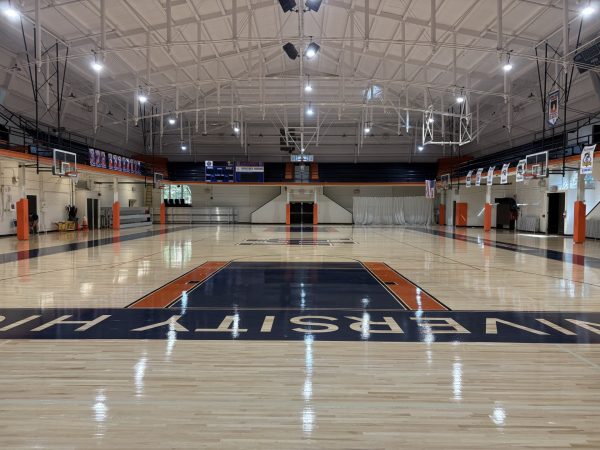“I Love Consent” Discussions’ Overview
The first of two “I love consent” discussions was held Monday, December 11th during Uni period in room 106N. The second was held Friday, December 15th, also during Uni Period in the same room. The SSO and Jaya Kolisetty, the Associate Director at RACES (Rape, Advocacy, Counseling, & Education Services) are hosting these events.
These discussions are being held to, “identify, prevent and respond to sexual violence.” With the current uproar of sexual harassment claims in the media, this seems to have come at a very appropriate time.
The discussion Monday began by Kolisetty explaining that the guidelines for sexual harassment may vary from place to place. So she asked if anyone knew Uni’s specific guidelines for sexual harassment. Out of the 25 or so students there, no responses were given.
“I don’t think a lot of people know what sexual harassment is,” said Freshman Curtis Althouse, reflecting on the event. “It was good to learn what types of things may classify.”
After some more brief discussion, an activity began. Students who chose to participate in the activity received a card. On the card, a sexual/romantic action was given, for example, holding hands. The students were assigned to put the cards in one of three categories. The first category was harmless flirtation, the second was a question mark, and the third was sexual harassment.
The activity immediately ran into problems, as almost the actions could be seen as either harmless, or sexual harassment depending on the circumstances and how someone receives the action. For example, the action of “calling someone honey or babe” was brought up. Some people in the audience said how this could be seen as a compliment from their friends. In this case, this action would not be considered sexual harassment. However, some members of the audience said “being called honey or babe” would negatively affect them if it was done by a complete stranger.
“It’s all about context,” said Freshmen Joel Armas, participant of the activity above.
This brought up the question of how does someone know what actions are okay to do, and which ones are not. The answer is the consent of all the people the activity may affect, both those participating in the action, and those having to witness the action. Ms. Kolisetty used an example of two students making out in the hallway. Even if both students were consenting to that, if the people who would see them in the hallway did not want to see that, then this could be interpreted as sexual harassment.
The discussion also informed students that they could either talk to Mr. Rayburn or Dr. Majerus if they experience what they believe to be sexual harassment.
“It was good to learn where I could go if I ever experienced something like that,” said sophomore Erin Minor. “I think a lot of people who experience sexual harassment just don’t know what to do about it.”
The discussion Friday focused more on sexual assault and rape than sexual harassment. It began with asking the participating students what stereotypes they knew about rape in terms of the victims, the perpetrators, where, and how it happened.
After the students stated what they knew, RACES then busted these stereotypes and told the truth. They put a particular focus on how despite most stereotypes, the perpetrator is usually someone the victim knows (more than 90% of the time), rather than a stranger.
The discussion also focused on how it is never the victim’s fault for what may have happened, although they may often feel that way. The only one ever to be blamed is the perpetrator.
